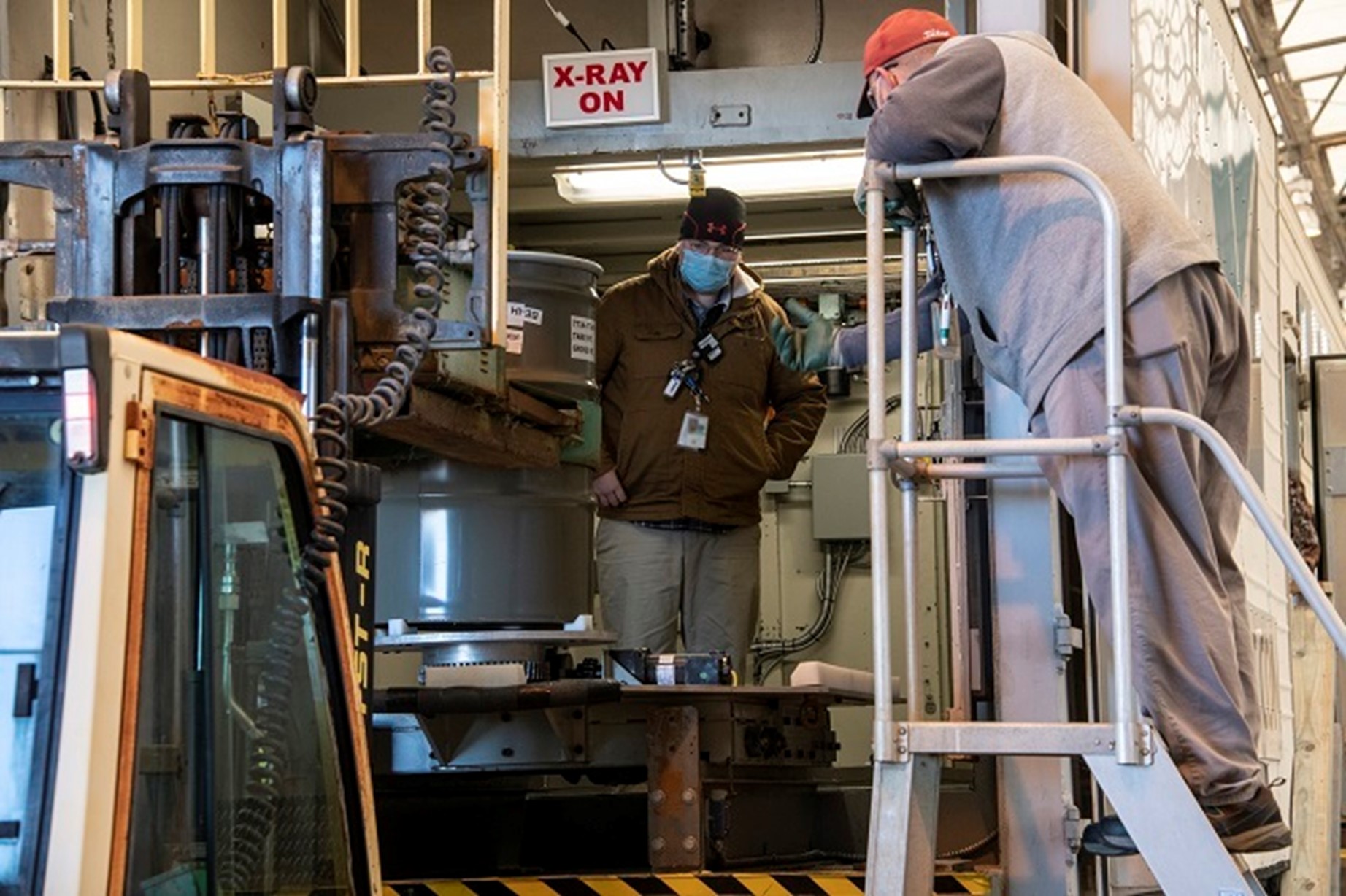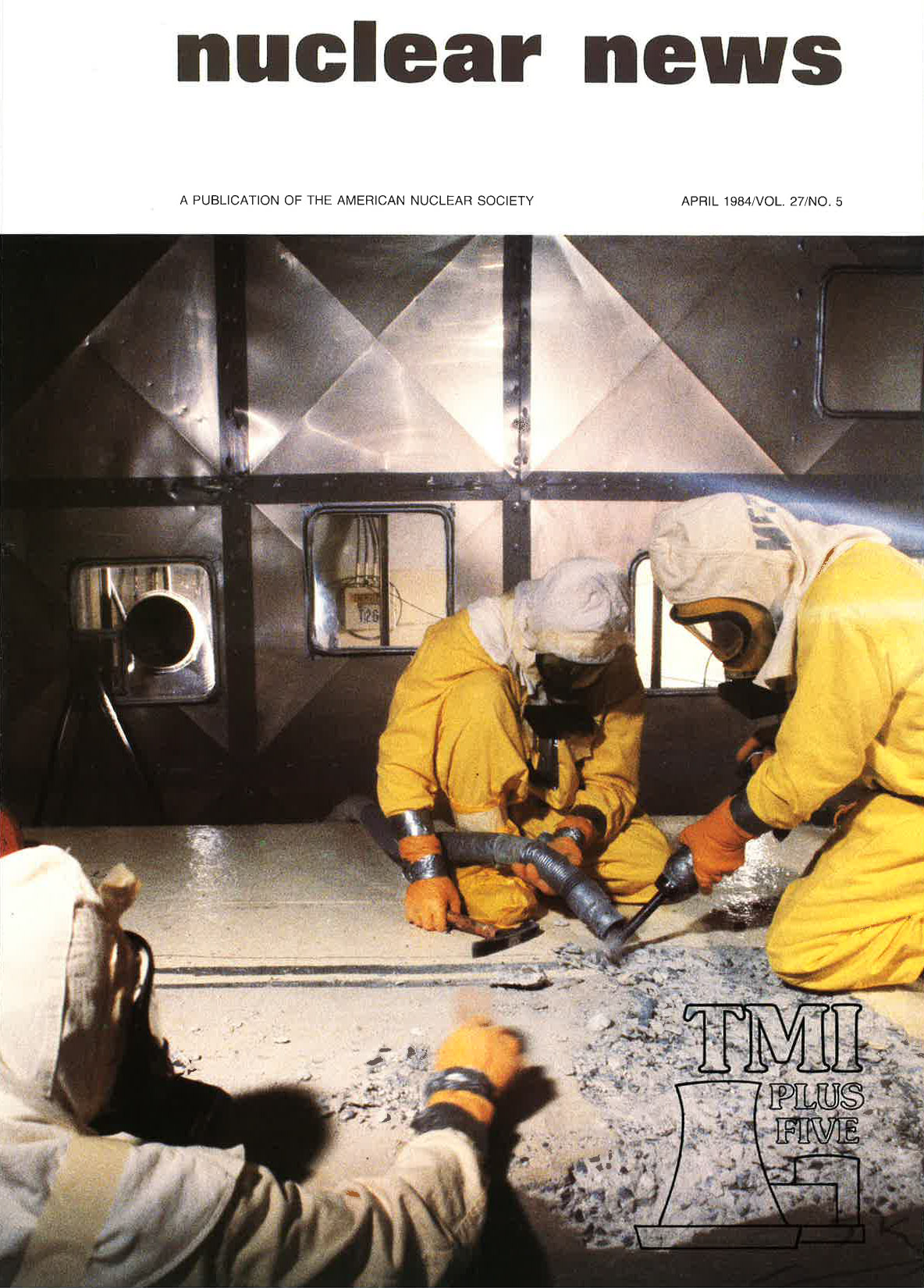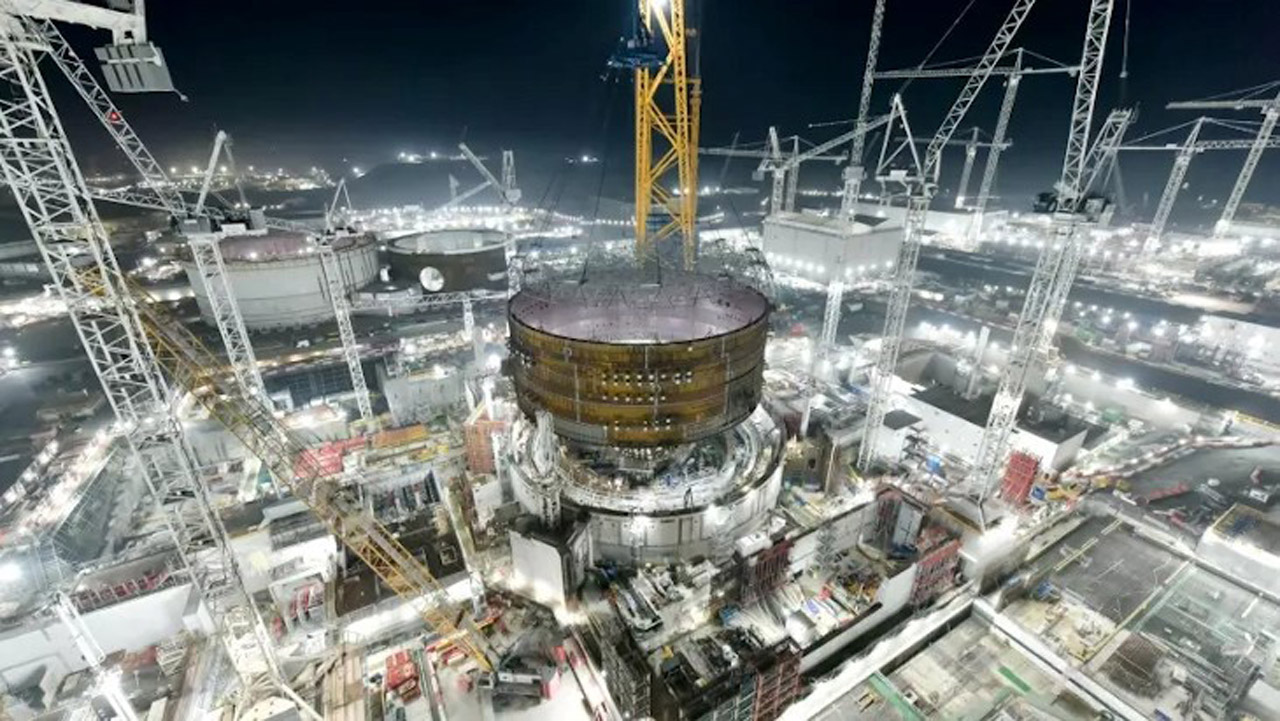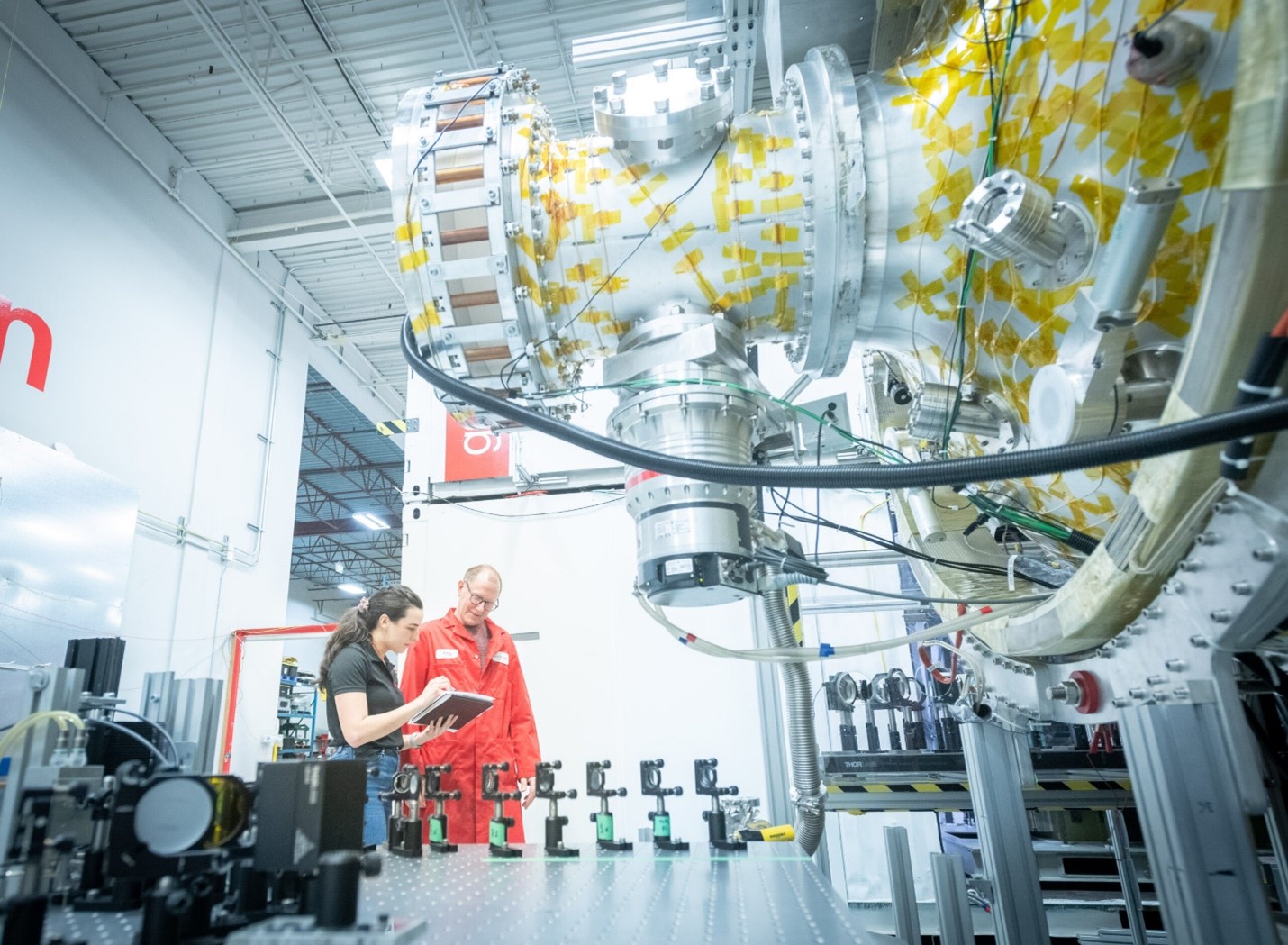Focus on Ukraine

We’ve sifted through facts and statistics on nuclear power in Ukraine to offer some choice insights here. Want more international nuclear data? Check out the March 2022 Nuclear News Reference Issue.

A message from Goodway Technologies
Optimizing Maintenance Strategies in Power Generation: Embracing Predictive and Preventive Approaches

We’ve sifted through facts and statistics on nuclear power in Ukraine to offer some choice insights here. Want more international nuclear data? Check out the March 2022 Nuclear News Reference Issue.

The San Luis Obispo County Board of Supervisors earlier this week endorsed extending the life of Diablo Canyon—California’s last operating nuclear power facility—which owner and operator Pacific Gas and Electric Company has scheduled for permanent closure in 2025. The two-unit, 2,289-MWe plant is located in San Luis Obispo County, near Avila Beach.
The Department of Energy’s Office of Nuclear Energy has officially launched its $6 billion civil nuclear credit program, which is intended to support nuclear power reactors at risk of shutting down because of economic factors. A notice of intent and request for information (NOI/RFI) regarding the program was published in the February 15 Federal Register. The DOE-NE had announced the program with the release of a pre-publication version of the NOI/RFI on February 10.

Operators at the Savannah River Site’s Solid Waste Management Facility can now characterize and certify newly generated TRU waste through the use of a real-time radiography unit that uses an X-ray system to examine the contents of waste containers. The equipment was recently installed to meet updated requirements set by the Department of Energy’s National TRU Program that involve evaluating the containers for chemical compatibility and oxidizing chemicals.
The shipments of TRU waste from SRS, in South Carolina, are sent to the Waste Isolation Pilot Plant (WIPP), in New Mexico, for disposal.

Graham

Menendez
Sens. Bob Menendez (D., N.J.), chairman of the Senate Foreign Relations Committee, and Lindsey Graham (R., S.C.) have introduced a resolution calling for the U.S. government to adopt a policy that would permit any Middle Eastern state access to nuclear fuel via a regional fuel bank, provided it agrees to abstain from uranium enrichment and reprocessing.
Modeled on the International Atomic Energy Agency’s nuclear fuel bank in Kazakhstan, the proposed regional fuel bank would allow the commercial development of nuclear power throughout the Middle East while at the same time eliminating the need for dangerous and destabilizing domestic nuclear programs, according to a February 11 press release from the legislators.

At an event held on February 14 at the Chamber of Commerce in Washington, D.C., small modular reactor developer NuScale Power inked an agreement with KGHM Polska Miedz S.A., to initiate deployment of NuScale’s SMR technology in Poland.

The Department of Energy has announced an $18 million funding opportunity for research and development in particle accelerator science and technology for nuclear physics research. Provided through the DOE’s Office of Science, the funding is intended to support “efforts essential to developing world-leading core competencies and transformative technologies that significantly advance the state-of-the-art accelerator capabilities.”

Counterfeit, fraudulent, and suspect items (CFSI) are present in U.S. operating nuclear power plants, potentially increasing safety risks, a “special inquiry” report released last Thursday from the Nuclear Regulatory Commission’s Office of the Inspector General has concluded. The term “CFSI” can refer to parts that have been intentionally altered to imitate a legitimate product or those that have been misrepresented with intent to deceive, as well as parts that merely fail to meet intended product specifications.
The OIG initiated the report to look into allegations that CFSI are present in most, if not all, U.S. nuclear plants, that the NRC has lowered its CFSI oversight standards, and that the agency has failed to address CFSI concerns.

Walker
Despite its status as the number one state in nuclear generating capacity (with 11 power reactors)—and despite having provided a sizeable financial boost to its reactor fleet last September—Illinois currently prohibits new nuclear power plant construction.
The ban, however, is now being targeted by state Rep. Mark Walker (D., Arlington Heights), who is sponsoring a measure in the Illinois General Assembly to have it repealed.
The bill: On January 31, Walker introduced H.B. 5589, which would amend the Illinois Public Utilities Act by deleting language stating that “no construction shall commence on any new nuclear power plant to be located within this state, and no certificate of public convenience and necessity or other authorization shall be issued therefore by the Illinois Commerce Commission, until the director of the [Illinois] Environmental Protection Agency finds that the United States government, through its authorized agency, has identified and approved a demonstrable technology or means for the disposal of high-level nuclear waste, or until such construction has been specifically approved by a statute enacted by the General Assembly.”

A new record has been set by the world’s largest operating tokamak, the Joint European Torus (JET). According to the EUROfusion scientists and engineers who work on JET at the U.K. Atomic Energy Authority’s Culham Centre for Fusion Energy, the landmark experiment, announced on February 9, which produced 59 megajoules of fusion energy over five seconds, is powerful proof of fusion’s potential as a clean energy source.
 Today’s #ThrowbackThursday post looks at the initial debate surrounding the conversion of research reactor fuel from high-enriched uranium to low-enriched uranium. An article published in the April 1984 issue of Nuclear News (available to all ANS members), titled “NRC studies HEU-to-LEU fuel conversion issue,” was written by the ANS Washington editor John Graham, and brings up several items of interest.
Today’s #ThrowbackThursday post looks at the initial debate surrounding the conversion of research reactor fuel from high-enriched uranium to low-enriched uranium. An article published in the April 1984 issue of Nuclear News (available to all ANS members), titled “NRC studies HEU-to-LEU fuel conversion issue,” was written by the ANS Washington editor John Graham, and brings up several items of interest.
The story: Graham introduces the readers to the growing security concerns around HEU and notes that the issue has its roots in the nonproliferation concerns from the Carter administration that forced the domestic nuclear industry to abandon certain projects—the subject of a #TBT post a couple of weeks ago.

Justice
West Virginia Gov. Jim Justice signed a bill yesterday that repeals the state’s quarter-century-old ban on nuclear power plant construction. The legislation, S.B. 4, passed the West Virginia Senate and House of Delegates last month with no substantial opposition and will go into effect in May.
S.B. 4 rescinds article 27A of the West Virginia Code, which prohibited “the construction of any nuclear power plant, nuclear factory, or nuclear electric power generating plant until such time as the proponents of any such facility can adequately demonstrate that a functional and effective national facility, which safely, successfully, and permanently disposes of radioactive wastes, has been developed.” 27A also required nuclear facility construction to be economically feasible for West Virginia ratepayers and in compliance with all applicable environmental protection laws, rules, and requirements.

The United Kingdom’s Office for Nuclear Regulation (ONR) has granted permission for the start of bulk mechanical, electrical, and HVAC component installation work at the Hinkley Point C site in Somerset, England, where two 1,630-MWe EPRs are under construction. Thus far, most of the activity at Hinkley Point C has been in the field of civil construction.
This new phase, according to ONR, will require a workforce of up to 4,000 during peak times, including welders, pipe fitters, and electricians. The work is to be accomplished over a three-year period, with NNB Genco—the EDF Energy subsidiary set up in 2009 to build and operate Hinkley Point C—teaming up with four suppliers: Balfour Beatty Bailey, Doosan, Cavendish, and Altrad.

The International Atomic Energy Agency has launched the Rays of Hope program to tackle a severe shortage of cancer care capacity in poorer countries. The program’s initial focus will be on Africa, where people often die from the disease because of the lack of access to potentially life-saving nuclear medicine and radiotherapy, according to the IAEA.
A video on the program is available on YouTube.

SHINE Europe, a nascent subsidiary of Wisconsin-based SHINE Technologies, announced Wednesday that it has secured funding to begin designing an advanced medical isotopes facility in Veendam, the Netherlands. The new facility will use the same fusion-based neutron generator system SHINE is employing at its Janesville, Wis., facility to produce medical isotopes, including molybdenum-99, which is used in diagnostic imaging.
The European Commission gave two cheers for nuclear energy yesterday with its adoption of the Complementary Climate Delegated Act (CDA), which adds—under what the EC refers to as “clear and strict conditions”—nuclear and natural gas to the list of green technologies covered by the EU taxonomy. (The taxonomy is the classification system used by the European Union to guide private investment toward environmentally sustainable economic projects.)

Bruce Power, General Fusion, and the Nuclear Innovation Institute have signed a memorandum of understanding to evaluate the potential deployment of a fusion power plant in Ontario, including in a region on the shores of Lake Huron comprising three counties—Bruce, Grey, and Huron—that has been dubbed the Clean Energy Frontier. Together the three organizations plan to build on existing clean energy technologies and expertise in the region and lead stakeholder and public outreach activities to raise awareness of the potential benefits of fusion energy.

Lee
In his annual State of the State Address on January 31, Tennessee Gov. Bill Lee offered more praise for nuclear energy, after lauding it earlier in the month during a tour of the Tennessee Valley Authority’s Watts Bar nuclear plant
“For decades, East Tennessee has been home to some of the best-kept secrets in nuclear energy and American innovation,” Lee told the state’s General Assembly. “Today, many may not realize that Tennessee derives more power from nuclear energy than from any other source. Recently, I visited the TVA’s Watts Bar nuclear facility, the last nuclear facility to be built in America, to see firsthand how nuclear power keeps our grid dependable even when the weather is not. Nuclear power is clean energy that actually works for the private sector.”
Constellation, formerly Exelon Generation, owner and operator of the nation’s largest nuclear reactor fleet, announced this morning the completion of its separation from Exelon Corporation and its launch as a stand-alone, publicly traded company. Headquartered in Baltimore, Md., the new company began trading today on the Nasdaq Global Select Market under the symbol “CEG.”
Exelon announced last February that it had begun the effort to separate its utility businesses from its competitive power generation and customer-facing energy businesses.

Alaska Gov. Mike Dunleavy (R.) introduced “An act relating to microreactors” (SB 177) in the Alaska state legislature on February 1 that would modify existing state law on nuclear energy by specifying that microreactors are not subject to certain nuclear reactor siting and permitting regulations in Alaska. The bill defines a microreactor as an advanced nuclear fission reactor that would be capable of generating no more than 50 MWe.